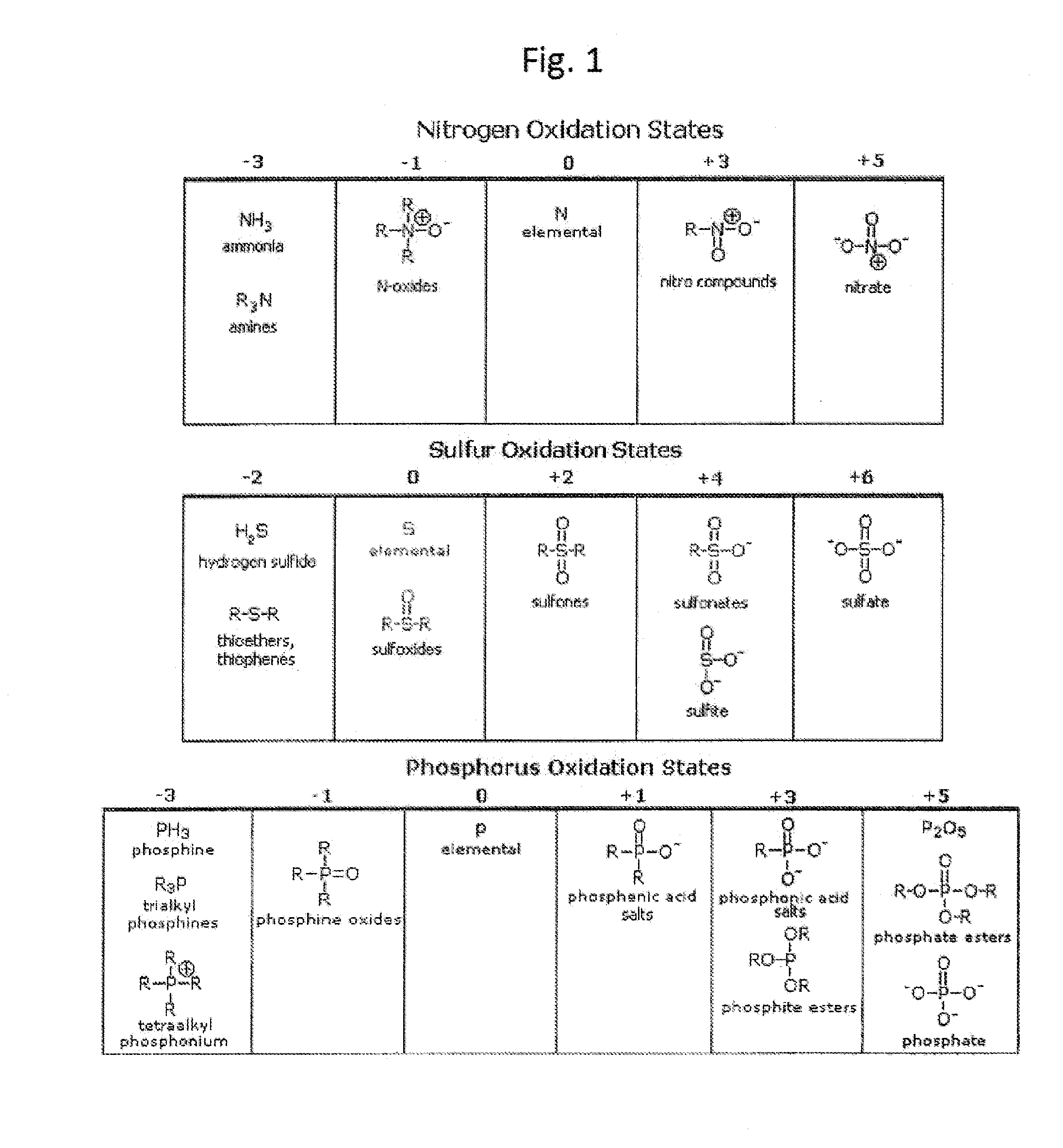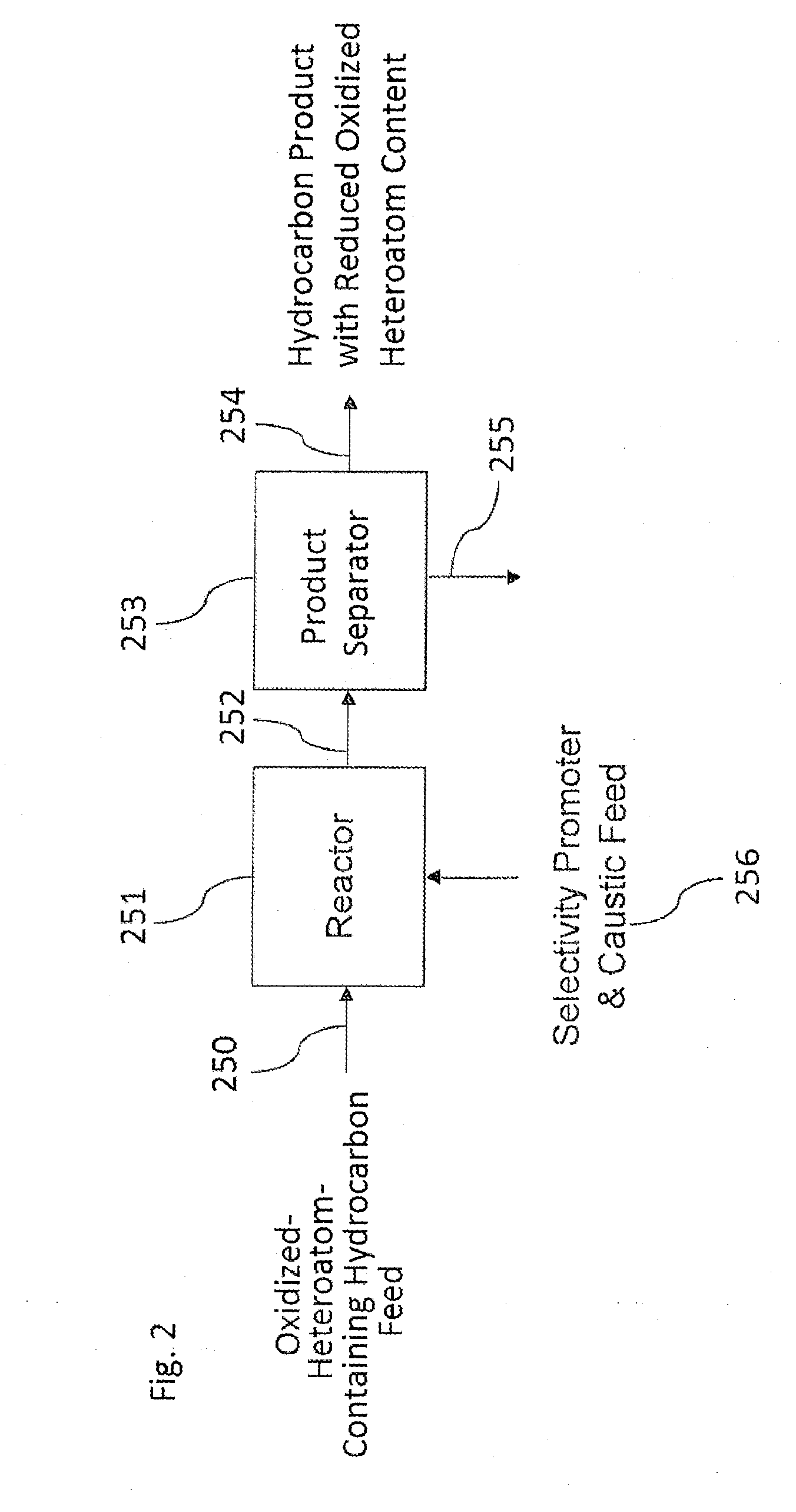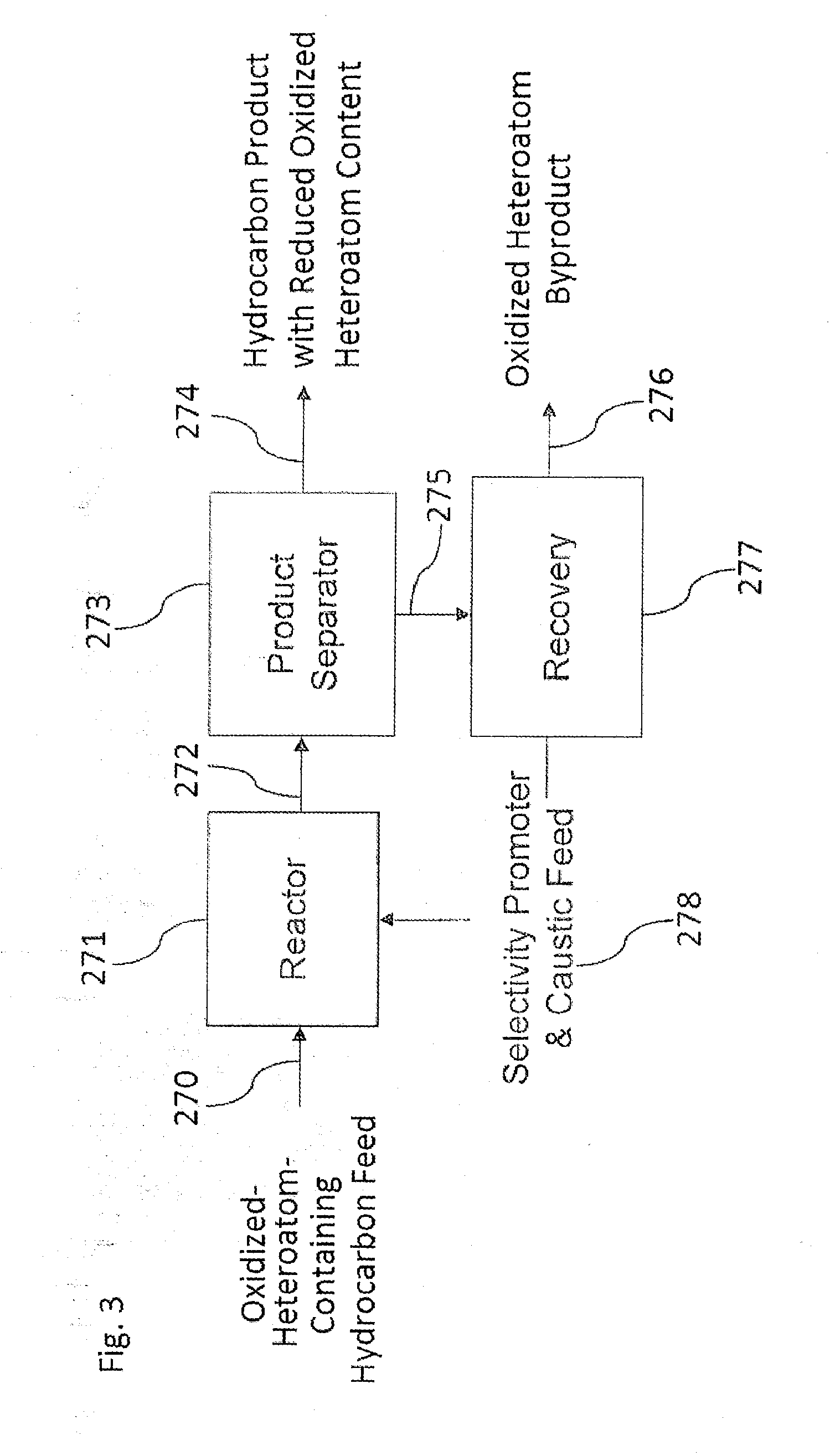Methods for upgrading of contaminated hydrocarbon streams
a technology for hydrocarbon streams and upgrading methods, which is applied in the direction of hydrocarbon oil treatment, plural serial refining treatment, and refining with solid alkaline materials, etc., which can solve the problems of reducing the efficiency of catalytic converters in automobiles, affecting these downstream processes, and presenting similar environmental risks
- Summary
- Abstract
- Description
- Claims
- Application Information
AI Technical Summary
Benefits of technology
Problems solved by technology
Method used
Image
Examples
example 1
Preparation of Pelletized Polymeric Titanyl Catalyst
[0085]A dimethyl sulfoxide (DMSO) solution of co-monomer (e.g. 4,4′-bisphenol A dianhydride (BPADA)) is prepared and is combined with a DMSO solution of the titanyl (e.g. bis(glycerol)oxotitanium(IV)) with stirring at 70° C. for about 4 hrs to produce a copolymer solution. Then, the solution is cooled to room temperature, and the polymer product is precipitated with excess acetone. The polymeric precipitate is collected by vacuum filtration and is dried. The yield of precipitated polymeric titanyl catalyst is greater than 90%.
[0086]A blend of bonding agent (Kynar®), optional inert filler (silica or alumina), and the polymeric titanyl catalyst is prepared in a solid mixer or blender. The blended mixture is then extruded or pelletized by compression producing uniform catalyst pellets with hardness test strength preferably greater than 2 kp.
example 2
Continuous Catalytic Removal of Heteroatoms from a Heteroatom-Contaminated Light Atmospheric Gas Oil
[0087]Straight-run light atmospheric gas oil (LAGO) (3.45% sulfur) and cumene hydroperoxide (30% in cumene, fed at a rate of 2.1 mole equivalents to sulfur in LAGO feed) are fed to a fixed bed reactor containing pelletized titanyl polymeric catalyst, prepared in accordance with Example 1, at about 85° C. with a combined LHSV of about 1.0 hr−1 producing a first intermediate stream. The first intermediate stream is vacuum distilled at −25 in Hg to remove and recover a low boiling distillate comprising cumene, cumyl alcohol, alpha-methylstyrene, and acetophenone from a heavy second intermediate stream. The heavy second intermediate stream essentially comprises light atmospheric gas oil with oxidized heteroatom compounds. The second intermediate stream is then fed into a heated reactor wherein it combines with a feed stream containing caustic and ethylene glycol (the combined liquid resid...
examples 3-12
Desulfonylation Using Hydroxide and Various Alcohols
[0088]A mixture of dibenzothiophene sulfone in 1,2,3,4-tetrahydronaphthalene is reacted with six molar equivalents of various alcohols, three molar equivalents sodium hydroxide, and three molar equivalents potassium hydroxide. Reactions are performed at 275° C. for one hour. The products of the reaction are acidified with aqueous hydrochloric acid, and then extracted with dichloromethane. The dichloromethane extract is analyzed by high pressure liquid chromatography (HPLC) to determine percent conversion of dibenzothiophene sulfone, and mole percent yield of biphenyl and ortho-phenylphenol. The results are given below in Table 1.
o-Phenyl-ExampleAlcoholBiphenylphenolConversion3None 7%64%93%4Ethylene Glycol65% 9%89%5Propylene Glycol37%17%99%6Glycerol41%51%99%71,3-Propanediol16%45%95%8Pinacol13%56%100% 9Ethanolamine20%21%100% 10Diethanolamine47%27%97%11Triethanolamine41%32%100% 124-(2-hydroxy- 8%31%100% ethyl)morpholine
PUM
 Login to View More
Login to View More Abstract
Description
Claims
Application Information
 Login to View More
Login to View More - R&D
- Intellectual Property
- Life Sciences
- Materials
- Tech Scout
- Unparalleled Data Quality
- Higher Quality Content
- 60% Fewer Hallucinations
Browse by: Latest US Patents, China's latest patents, Technical Efficacy Thesaurus, Application Domain, Technology Topic, Popular Technical Reports.
© 2025 PatSnap. All rights reserved.Legal|Privacy policy|Modern Slavery Act Transparency Statement|Sitemap|About US| Contact US: help@patsnap.com



